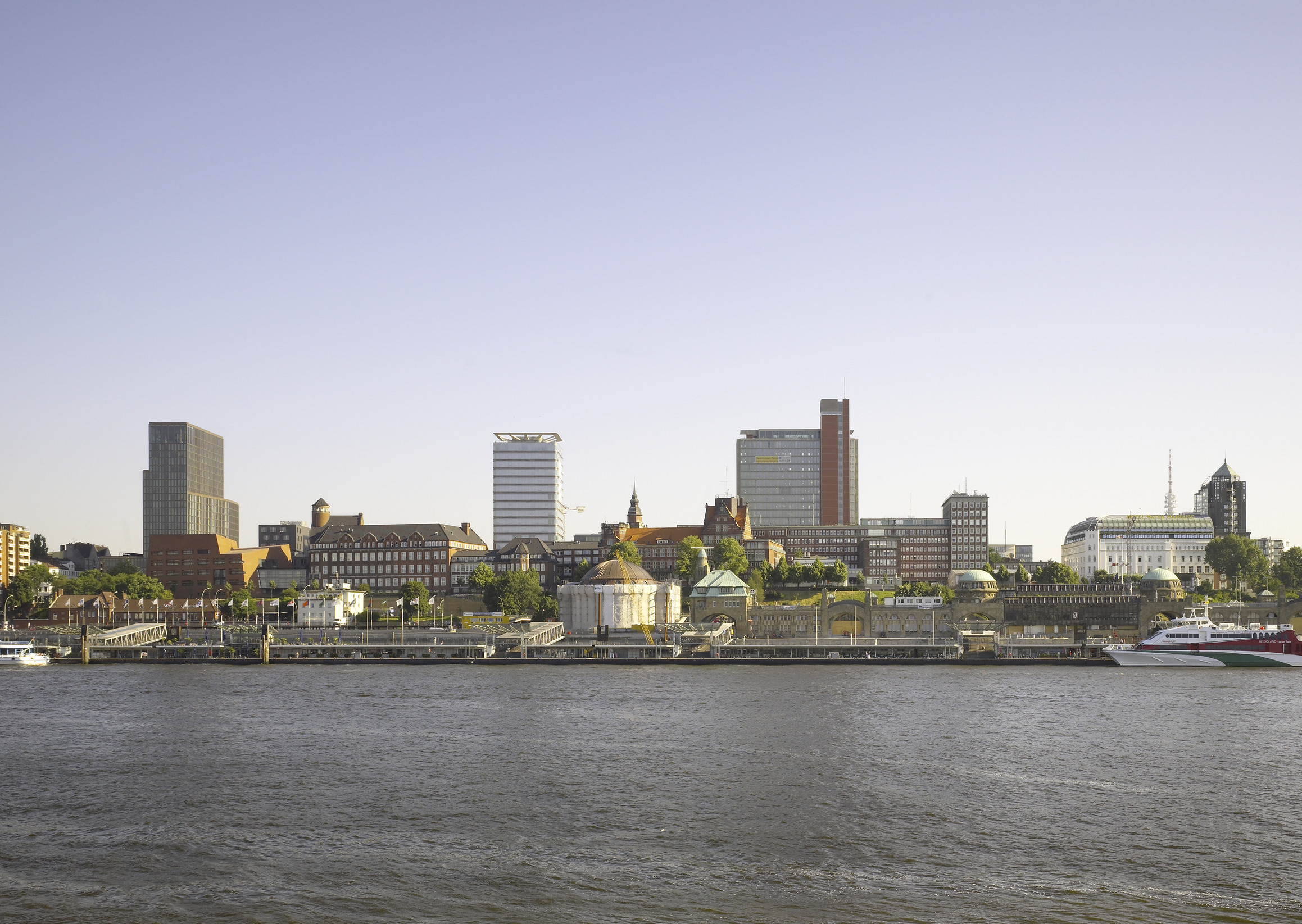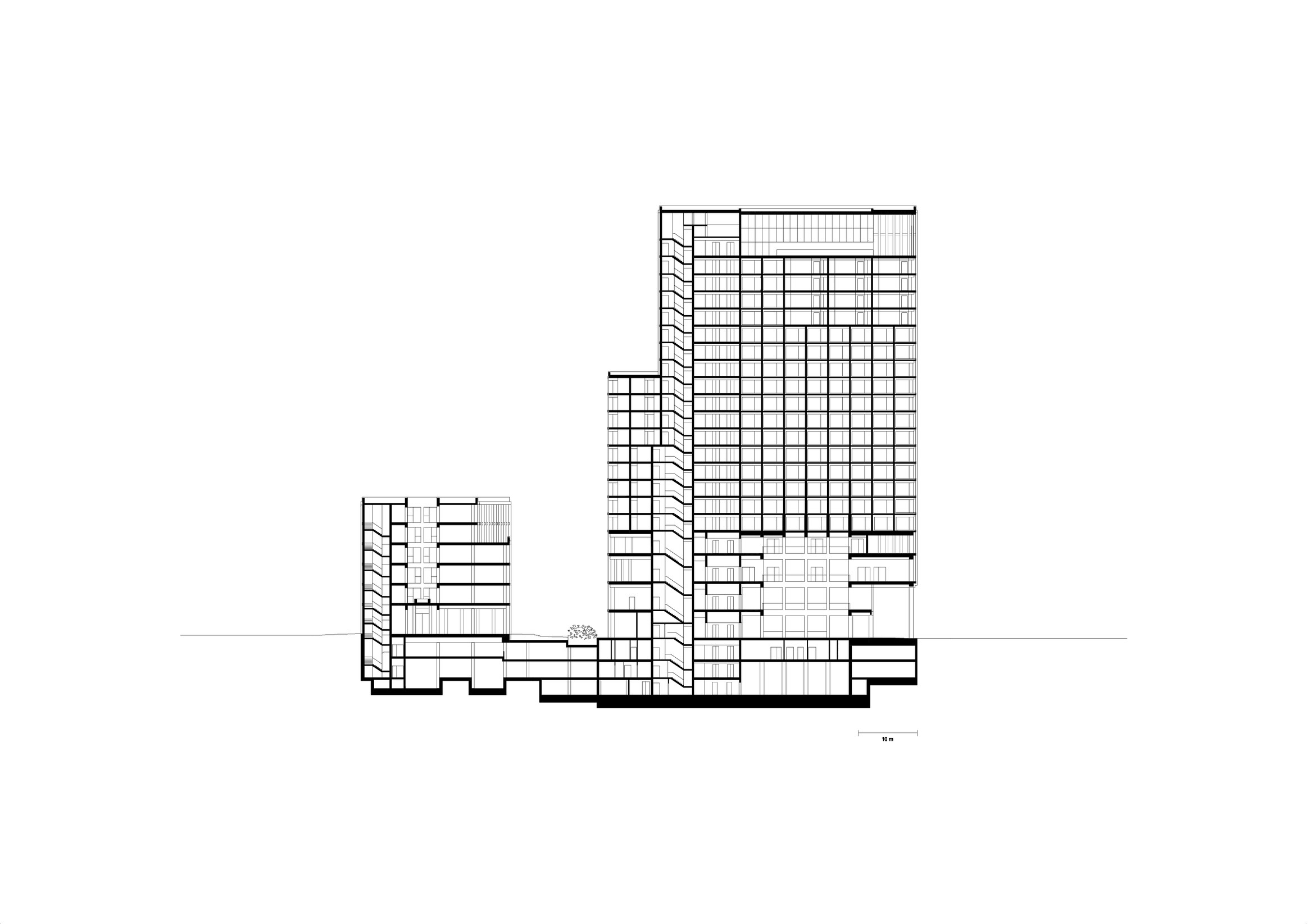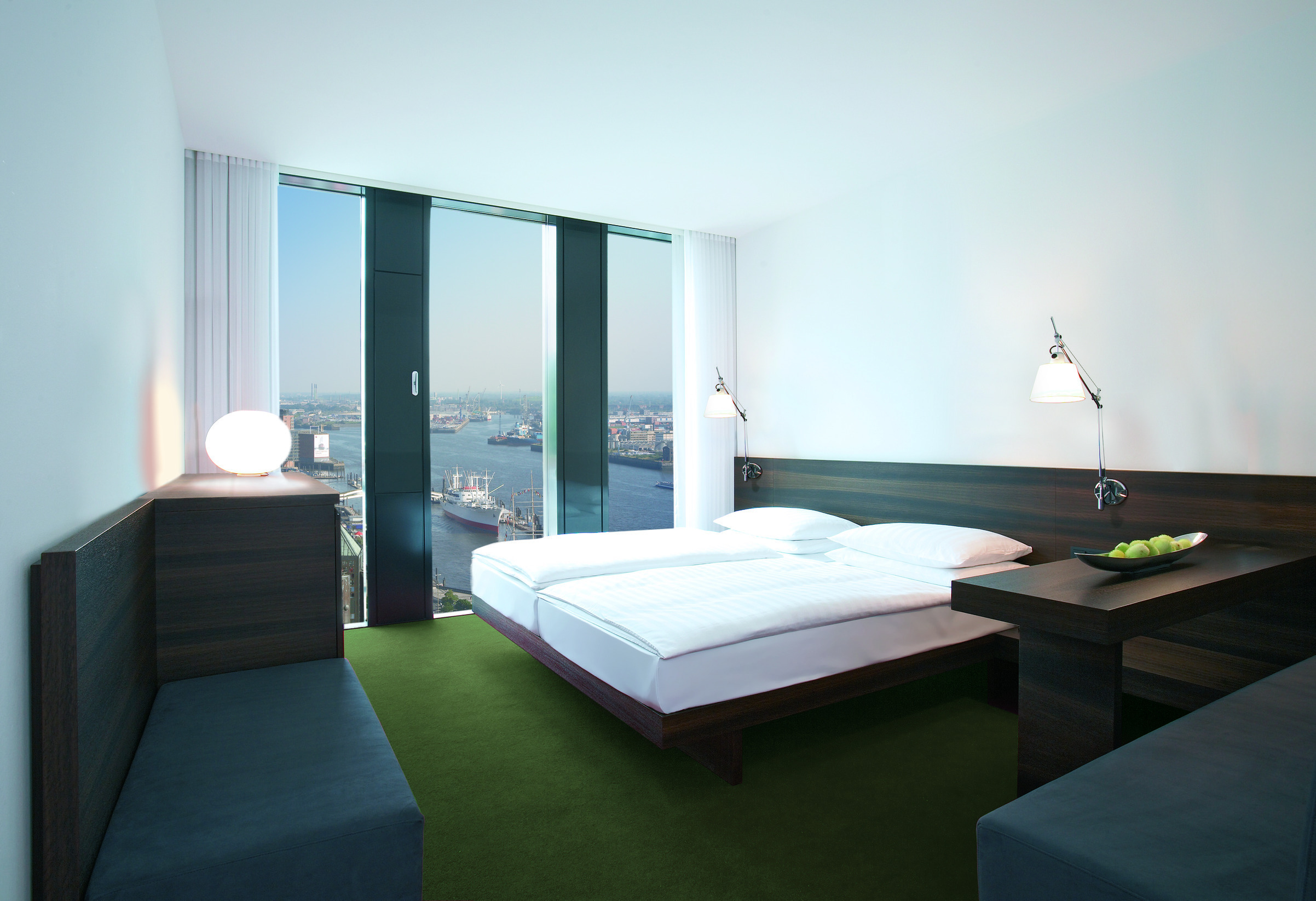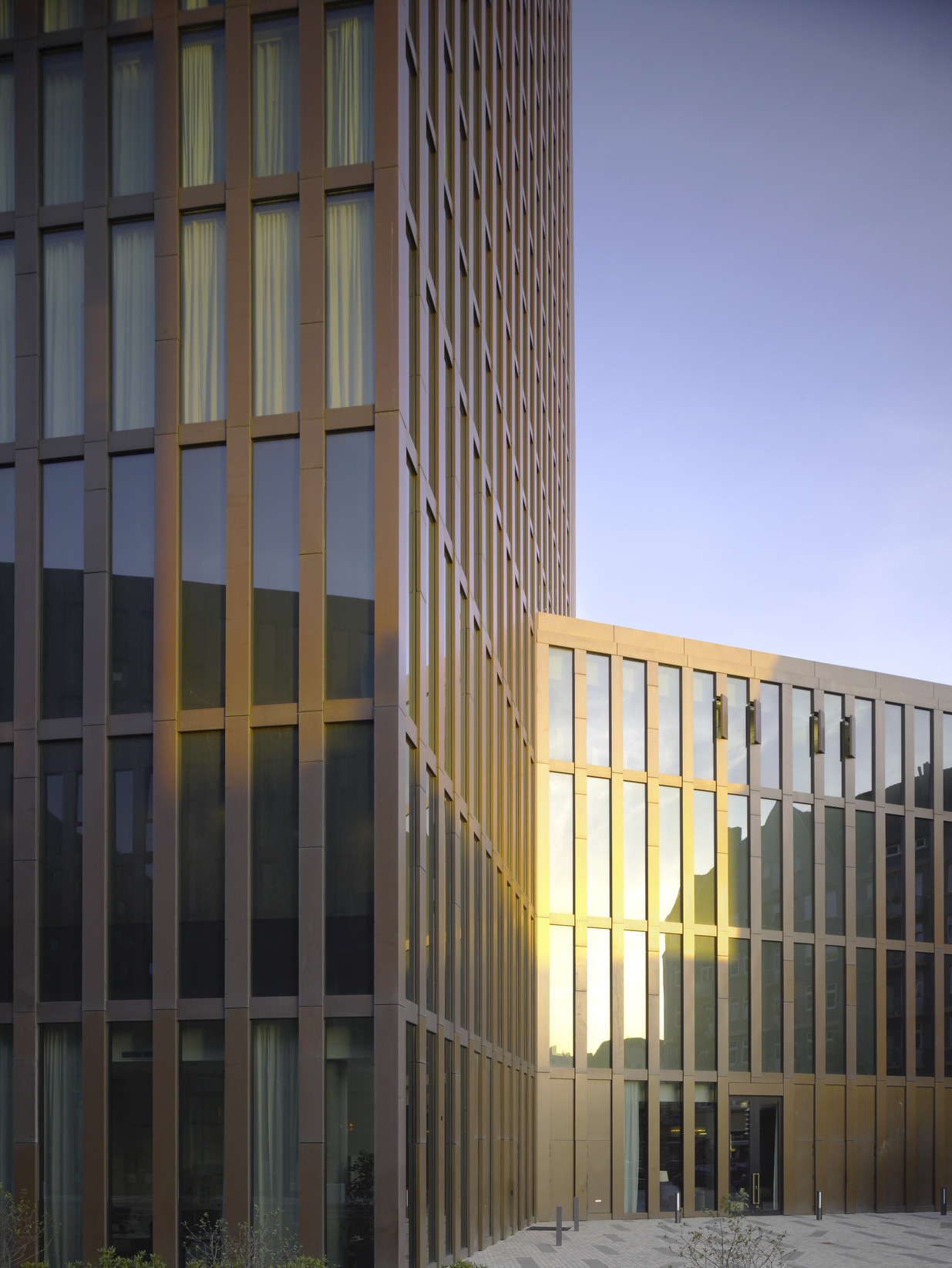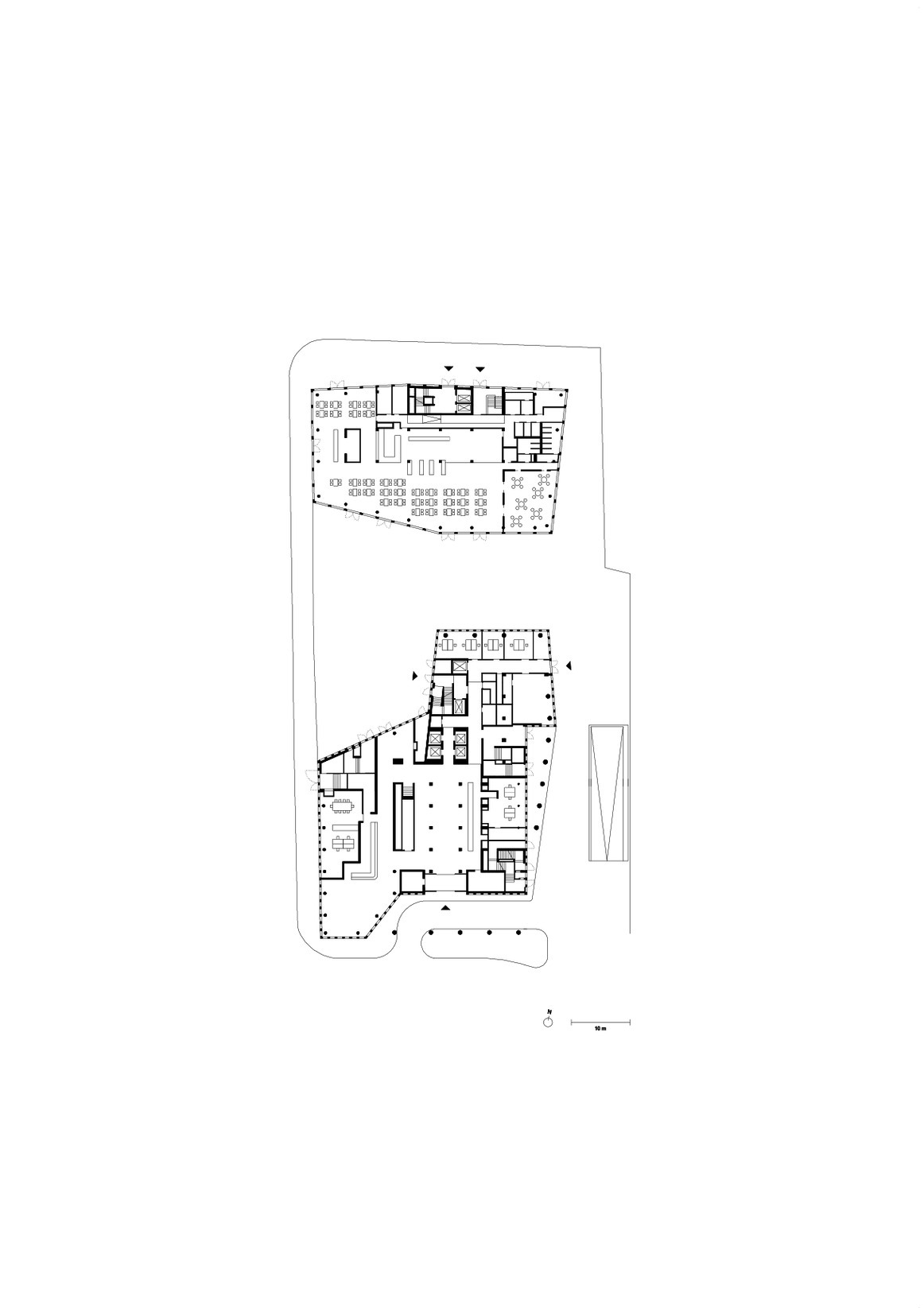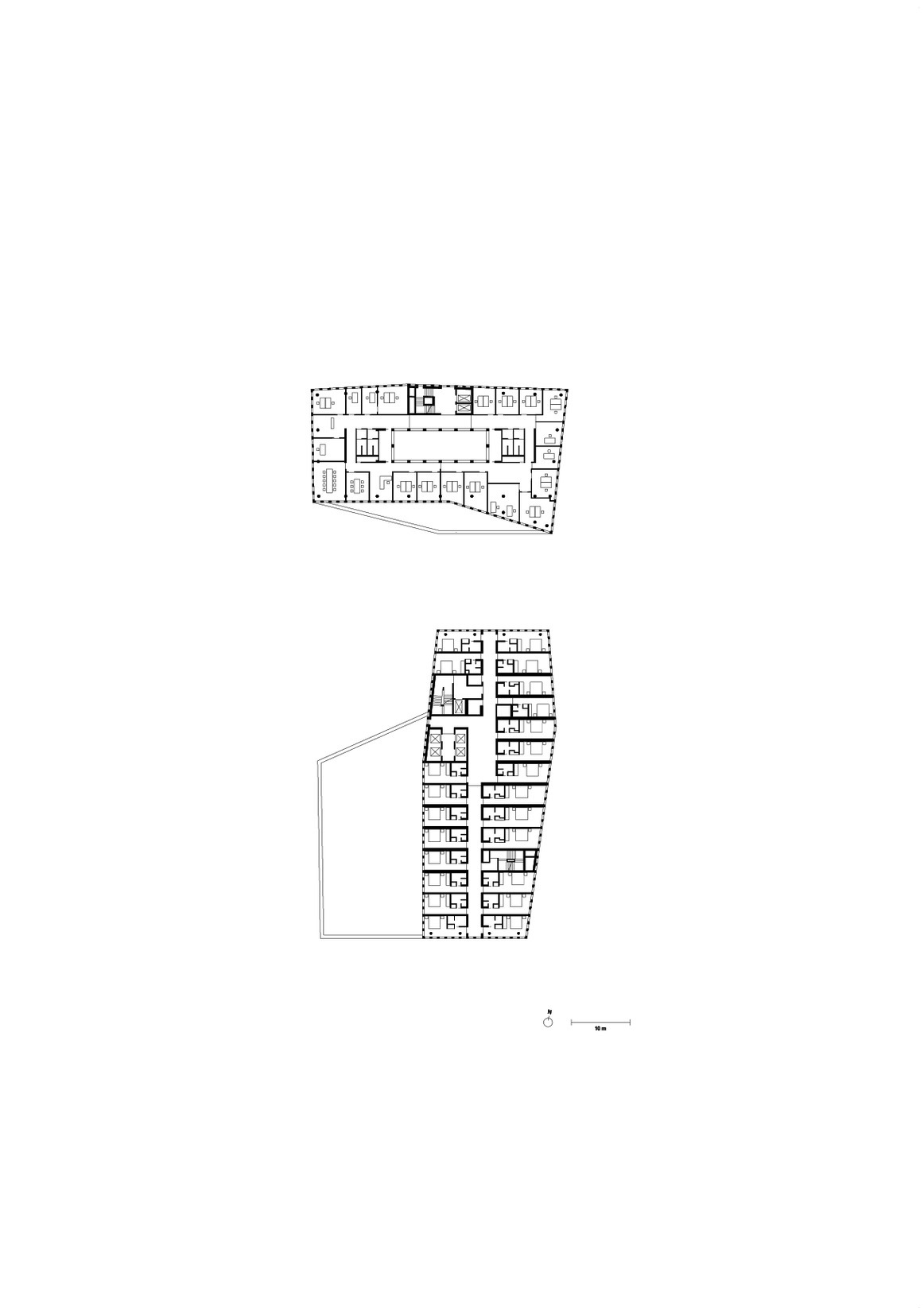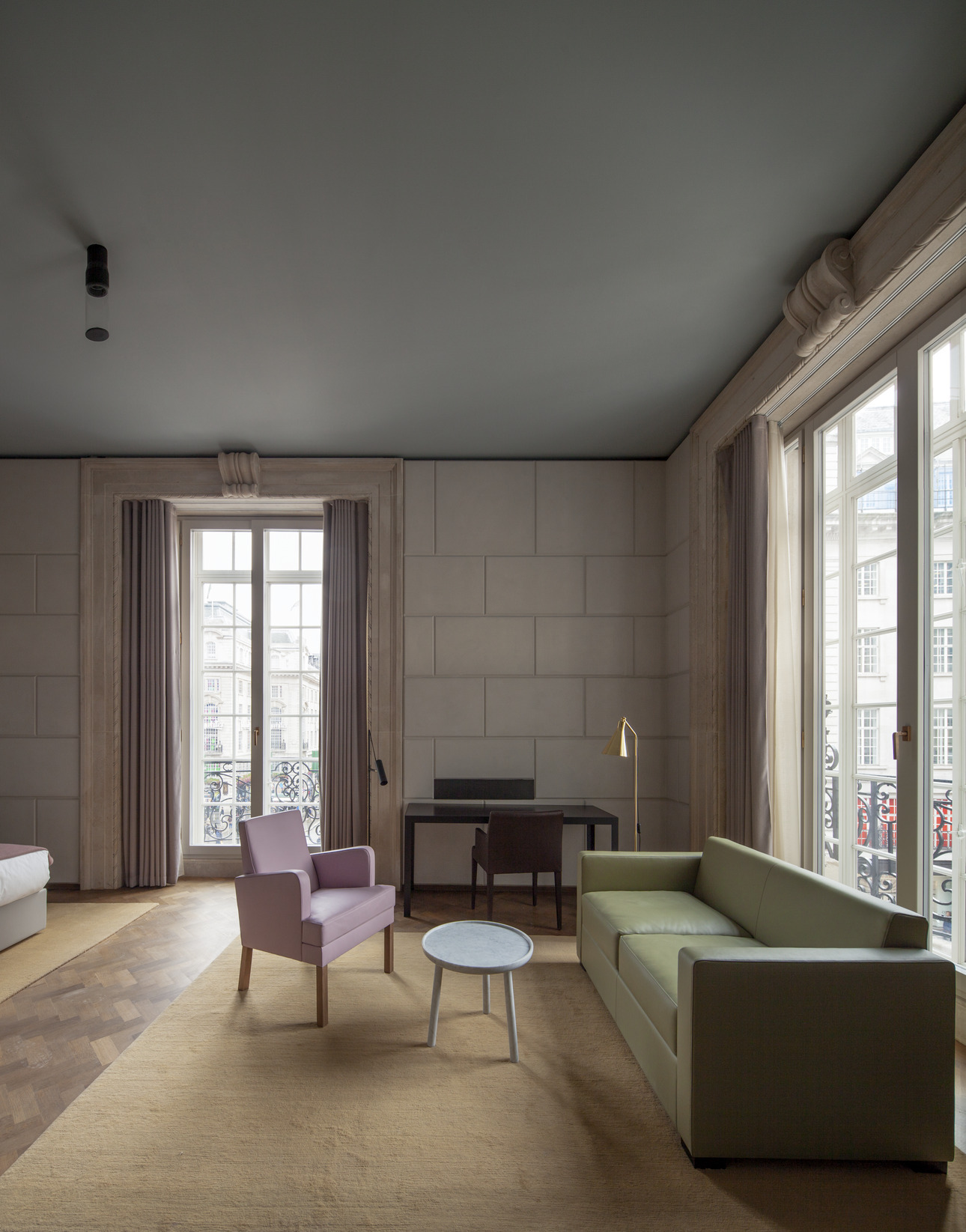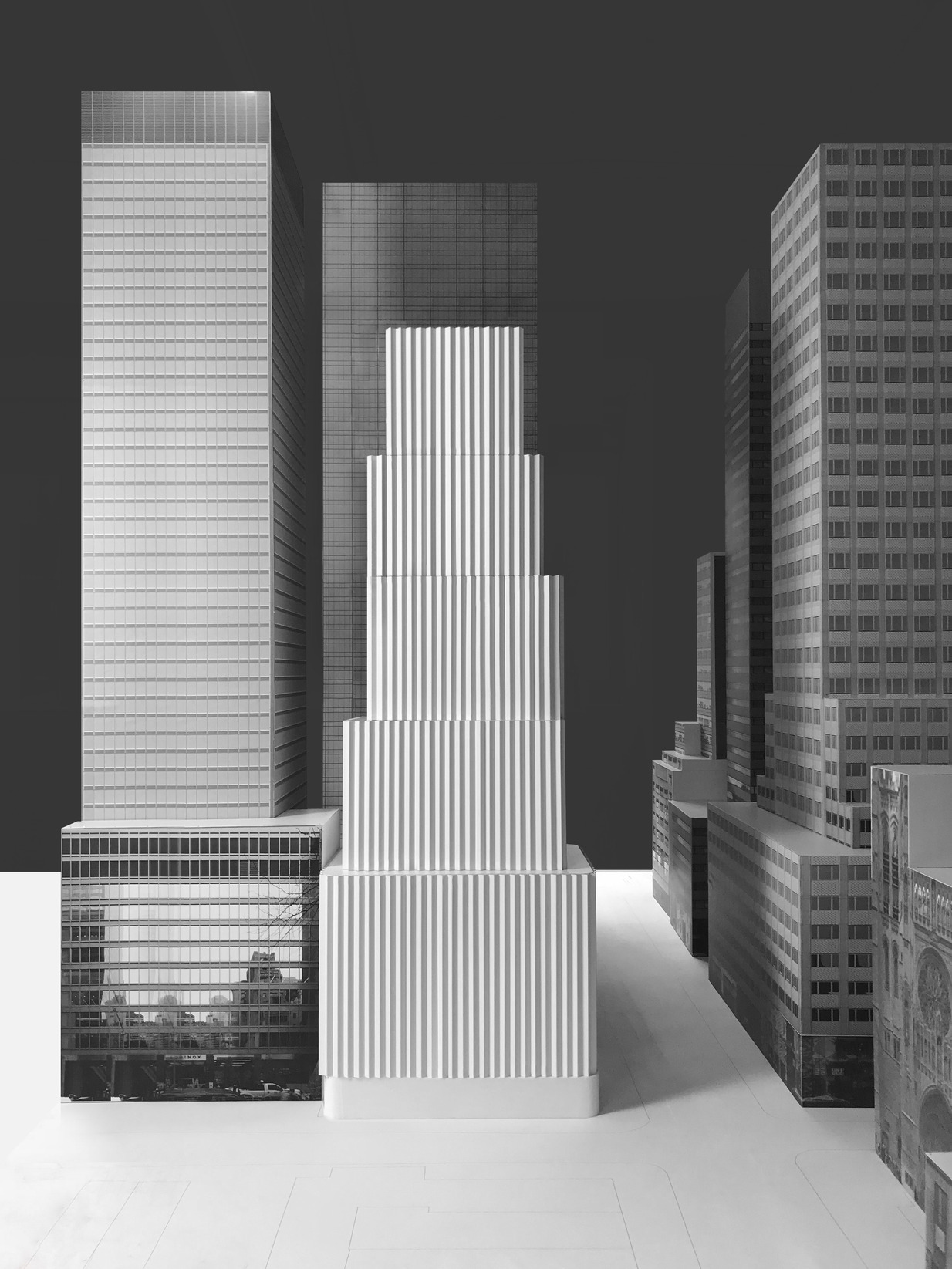Empire Riverside Hotel
Hamburg, Germany
2002–07
The Empire Riverside Hotel and the ‘Brauhaus’ – an adjacent retail and office building – are located in the centre of Hamburg on the former Bavaria brewery site, previously the largest industrial workplace in the inner city. The site constituted an urban void separating two disparate pieces of urban fabric: to the east, the grandeur of the commercial and institutional buildings of central Hamburg; to the north and west, the domestically scaled nineteenth-century working class district of St. Pauli with its principal thoroughfare, the Reeperbahn.
The project draws its immediate context into a programmatic and formal dialogue. It consists of three elements: a tower, a lower base and a public square (enclosed by the ‘Brauhaus’ and the lower base of the hotel). The hotel required over 300 guest rooms, flexible conference spaces, a ballroom, lobby spaces (including lounge, bar and restaurant), associated back-of-house facilities, a spa, and parking for 260 cars. In addition to the hotel requirements, the masterplan stipulated a 1,000 square-metre footprint and a height of seventy metres.
The combination of these requirements presented a significant challenge when mediating between the disparate parts of the city. The sequence and scaling of connected volumes was therefore seen as key to the development of the design. The hotel plot is at the western end of the larger site and the tower is positioned right up to the eastern edge of this plot. Two splayed set-backs struck at different levels across its east and west façades define the tower as a slender form facing the river. The L-shaped base of the hotel containing most of the public areas and the ‘Brauhaus’ continues the eaves line of the neighbouring historic fabric.
Internally, the hotel’s ground floor with its public areas is connected to the tower by a four-storey lobby space. Also publicly accessible, the top (twentieth floor) of the tower is crowned by a lofty double-height bar with dramatic views over the Elbe river and the city. The guest rooms, situated in the remaining seventeen floors of the tower, are intuitively arranged to create a sense of normality and spatial comfort. The full-height windows further characterise the rooms by offering stunning views and orienting the guest within the city. The material palette remains subdued with smoked-oak wall panels, a dark bitumen terrazzo, and classic Chesterfield furniture with brightly coloured leather upholstery, and corresponds to the lively structure of the bronze façade. The façade is constructed from prefabricated elements emphasising the building’s verticality. The use of bronze as a singular material is conceived as a continuous wrap around the building, enhancing the rhythmical character of the façades, while the beamand- post structure articulates the verticality of the total composition.
Seen from the Elbe, together with Astra Tower and St. Michaelis Church, the slender tower takes its place within the celebrated ‘Hafenkrone’ – an ensemble of prominent buildings and spires that define the Hamburg skyline.
ground floor plan
second floor plan
fourth floor plan
Data and credits
- Competition
- 2002
- Project start
- 2004
- Construction start
- 2005
- Completion
- 2007
- Opening
- 2008
- Gross floor area
- 21,000m² Hotel, 5,500m² 'Brauhaus'
- Client
- Empire Riverside GmbH & Co. KG
- Project controlling
- Witte Projektmanagement GmbH, Hamburg
- Architect
- David Chipperfield Architects Berlin
- Partners
- David Chipperfield, Christoph Felger (Design lead), Harald Müller
- Project architect
- Christoph Felger (Competition), Christian Helfrich (Preparation and brief, Concept design), Lutz Schütter (Developed design), Ulrich Goertz (Technical design, Site design supervision)
- Project team
- Amelie Haacke, Klaus Heldwein, Paul Hillerkus, Frank Jödicke, Birge Kahl, Daniel Keppel, Hartmut Kortner, Peter von Matuschka, Antonia Schlegel, Thomas Spranger, Daniel Wendler, Robert Westphal, Christoph Wiedemeyer
- Competition team
- Annette Flohrschütz, Dirk Gschwind, Amelie Haake, Klaus Heldwein, Christian Helfrich, Daniel Keppel, Hartmut Kortner, Marcus Mathias, Franziska Rusch, Antonia Schlegel
- Executive architect
- Gerdes Klatt Kissel Ingenieurgesellschaft für Hochbau mbH, Berlin (Procurement, Construction supervision)
- Landscape architect
- Levin Monsigny Landschaftsarchitekten, Berlin
- Structural engineer
- Planungsgruppe Dröge Baade Nagaraj, Salzgitter
- Services engineer
- REESE Beratende Ingenieure VDI, Hamburg
- Building physics
- Müller-BBM GmbH, Berlin
- Fire consultant
- H&L Brandschutz mit Plan Partnerschaftsgesellschaft, Willich
- Accoustic consultant
- Werner Genest & Partner Ingenieurgesellschaft mbH, Dresden
- Lighting consultant
- a.g Licht Gesellschaft beratender Ingenieure für Lichtplanung b.R., Bonn
- Kitchen consultant
- Profi-tabel Unternehmensberatung und Planungsbüro, Stuttgart
- Façade consultant
- R+R Fuchs, Munich
- Signage
- Polyform, Götzelmann Middel Schumann Stark GbR, Berlin
- Photography
- Christian Richters, Roman März
